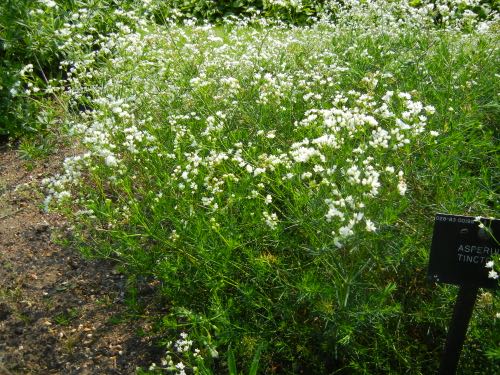Asperula tinctoria: A Versatile and Ornamental Perennial
Background: Asperula tinctoria, commonly known as Dyer’s Woodruff or Three-lobed Woodruff, is a herbaceous perennial plant belonging to the Rubiaceae family. It has a rich history of use for its medicinal properties and as a source of natural dye.
Characteristics: This small-sized plant typically reaches a height of about 12 inches (30 cm). It features slender, upright stems and pale green leaves that are arranged in whorls. In summer, the plant produces small white flowers with a delicate fragrance. Asperula tinctoria is known for its unique three-lobed structure and hermaphroditic flowers, containing both male and female reproductive organs.
Description: Asperula tinctoria is native to northern and central Europe, extending eastwards to Russia and Western Siberia. The plant blooms from June to September, adding a splash of beauty to the garden with its clusters of white flowers. Its dye-rich roots have been historically used by ancient Greeks and Romans to color clothing, and the plant continues to be valued for its dyeing properties today.
Cultivation of Asperula tinctoria:
Growing Conditions: Plant Asperula tinctoria in a location that receives full sun to partial shade. The soil should be well-drained and fertile. This versatile plant can adapt to various soil types but thrives best in alkaline soil conditions.
Planting: Choose a suitable spot in your garden and plant the seedlings or seeds of Asperula tinctoria in the spring or fall. Space the plants 12-18 inches apart to allow for healthy growth.
Watering: Although drought-tolerant, regular watering is beneficial, especially during hot and dry periods. Deep watering once a week is recommended, ensuring the soil remains moist but not waterlogged.
Fertilization: Asperula tinctoria generally does not require heavy fertilization. Incorporating compost or well-rotted manure into the soil before planting can provide sufficient nutrients. Avoid over-fertilization, as excessive nitrogen can negatively impact flowering.
Pests and Diseases: Asperula tinctoria is known to be relatively pest- and disease-resistant. However, occasional infestations of aphids, spider mites, or powdery mildew may occur. Monitor the plants regularly and take appropriate measures, such as using insecticidal soap or organic fungicides, if necessary.
Deadheading and Maintenance: To prevent excessive spreading and promote neat growth, consider deadheading the flowers after they fade. This involves removing the spent blooms by snipping them off at the base of the stem. Trimming back the plant after flowering can also encourage new growth and help maintain a compact form.
Winter Care: Asperula tinctoria is hardy in USDA zones 4-9. In colder climates, the plant may die back to the ground during winter. Protect the roots by applying a layer of mulch, such as leaves or straw, around the base of the plant. This will insulate the roots, providing protection against freezing temperatures.




